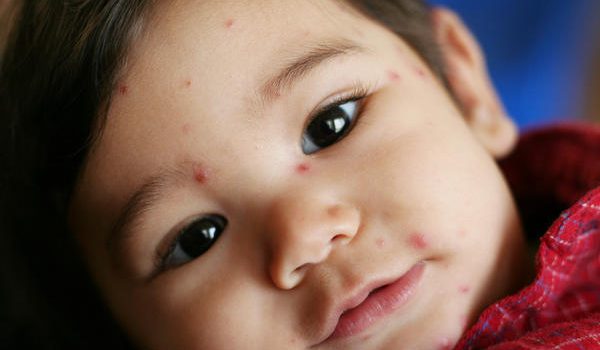Chickenpox is a curious illness in that, a lot of children want it because you get to stay at home, watch tv and eat jello. Whereas adults do not want it because they do not want to stay at home and there are stories that it is far worse to get chicken pox as an adult. Is there a way to prevent chickenpox? Yes there is. However, before you can prevent it, you must understand it.
What is Chickenpox?
 Chickenpox is also scientifically known as Varicella. It is highly infectious, which is why when a single child in a classroom gets it, it spreads like wildfire. It spreads easily because it is spread by air borne droplets. All it takes is for the affected individual to cough or sneeze, and the virus is air borne , it is then inhaled by others in the surrounding area. Before a person’s rash shows up, they are infectious for approximately 24 hours, and then for 4 to 5 days afterwards.
Chickenpox is also scientifically known as Varicella. It is highly infectious, which is why when a single child in a classroom gets it, it spreads like wildfire. It spreads easily because it is spread by air borne droplets. All it takes is for the affected individual to cough or sneeze, and the virus is air borne , it is then inhaled by others in the surrounding area. Before a person’s rash shows up, they are infectious for approximately 24 hours, and then for 4 to 5 days afterwards.
Etiology
The viral agent that causes chicken pox is called varicella zoster. It spreads by air borne droplets. These droplets do not only have to be inhaled to be infectious, if they land on surfaces or objects, and an individual touches them they can get infected.
People also get chicken pox when they come into close contact with individuals who have shingles. However, only those who have never been vaccinated are at risk. Shingles cannot be transmitted from those with chickenpox.
Signs and Symptoms
There is a distinction to be made between signs and symptoms. Symptoms are subjective, in that the patient experiences them but they cannot be seen by others. An example of a symptom is itchiness, which the patient feels but no one else can observe it. On the hand signs are objective, and they are what a doctor observes when a patient comes in. A cut is a sign, because the doctor can see the break in the flesh.
Chickenpox has a progression of symptomatology before and through.
Prior to the rash, the patient experiences malaise (a state of feeling unwell or sick), fever which tends to be far worse in adults compared to that in children, myalgias (muscle aches), anorexia (loss of appetite) and occasionally nausea.
Then the rash appears. It can vary from a few spots to several all over. They are usually clustered and within 2 days they form blisters and crust. Ten days later they fall off.
However, the spots can appear anywhere, even inside the patient’s mouth, the palm of the hands, etc. During the whole cycle new waves of spots can appear – in such cases the patient might have different clusters of spots at varying stages of itchiness, dryness and crustiness.
The more severe presentation of varicella are dyspnea or difficulty in breathing or chest pain.
Treatment
Treatment of chicken pox is usually supportive as there is no medication for the illness. Supportive treatment is whereby the patient’s symptoms are managed to prevent complications and discomfort. The patient is advised to have plenty of rest with a lot of fluids.
Prevention
The prevention of chicken pox is two-fold. First of all proper hygiene, especially if there is someone in the vicinity who is affected. This means proper handwashing, and cleaning all surfaces regularly.
The second part is getting the varicella vaccination. This provides protection from a chicken pox infection. With that in mind, now that the flu season is drawing near, troop on down to your nearest CVS and Walgreens and get your annual flu shot at an affordable price.


